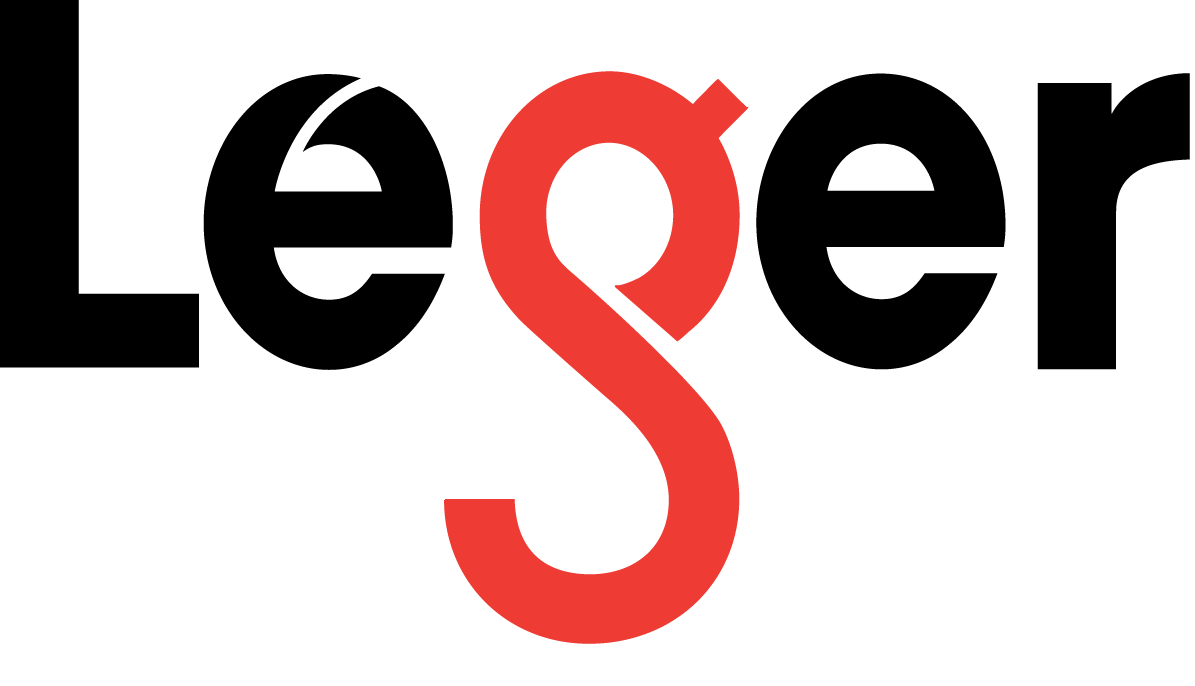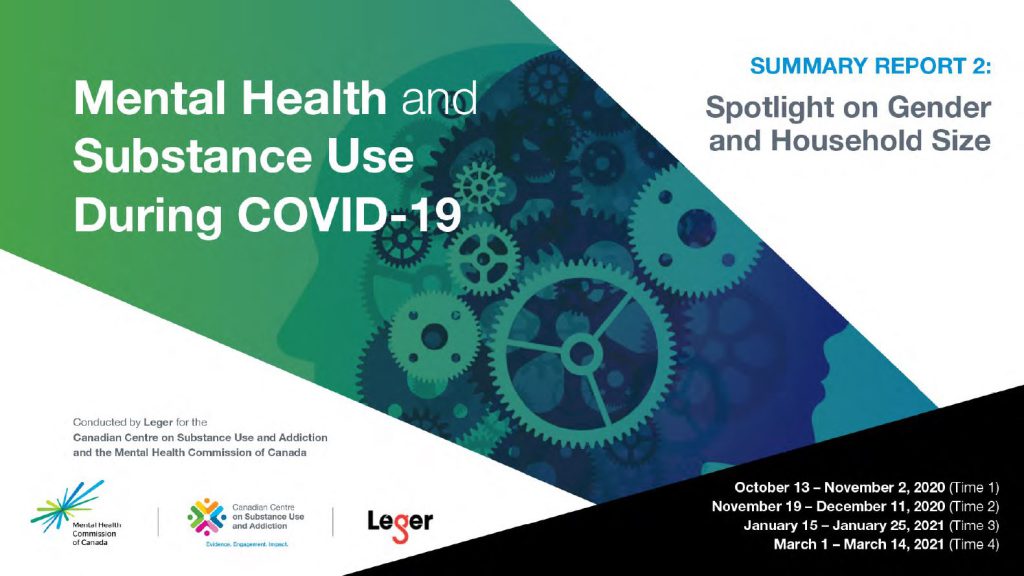COVID-19 continues to have a serious impact on mental health and substance use, with differences by gender and household size
A new report from the series of Leger polls commissioned by the Mental Health Commission of Canada and the Canadian Centre on Substance Use and Addiction highlights the different impact of COVID-19-related stressors by gender and household size, and provides an update on impacts for people with pre-existing substance use disorders or mental illness.
The survey of more than 7,000 Canadian residents found that female respondents in households with children under 13 reported higher rates of anxiety and increased substance use.
Key Findings
- More females report moderate-to-severe anxiety symptoms than males (29% vs 20%), with even higher rates for females and males in households with kids under 13 (37% vs 24%)
- Females in households with kids under 13 report higher rates of increased use than males (37% vs 26% for alcohol, 48% vs 37% for cannabis).
- More males report excellent or very good mental health than females (48% vs 35%), but more males report problematic alcohol use (28% vs 16%) and problematic cannabis use (43% vs 32%).
- People living alone are more likely to report moderate-to-severe depression symptoms (20% vs 15%), thoughts of suicide (9% vs 6%), and problematic alcohol use (31% vs 22%) compared to the rest of the population.
Context
It has now been over one year since the onset of the COVID-19 pandemic. Over the past year, concerns about catching the virus, feelings of isolation and hopelessness, financial concerns, job insecurity, the trauma of losing a loved one, or a combination of these and other stressors, have certainly affected us all. However, not everyone has been impacted equally.
Since October 2020, the MHCC and CCSA have been tracking the relationship between mental health and substance use over time and across several priority populations. This report includes cross-sectional findings collected over four time periods between October 2020 and March 2021. This report consists of three parts. Part One focuses on mental health and substance use across gender and household size, while Part Two looks at changes in mental health and substance use over time. Part Three provides an update on the first summary report, which focused on individuals with past or current mental health and substance use concerns.
Objectives
The objectives of this project are to:
- Track the ongoing impact of COVID-19 on mental health and substance use across several priority populations
- Highlight the intersection between mental health and substance use during the COVID-19 pandemic
- Inform public health policy and the development of resources related to mental health and substance use
Methodology
- Residents of Canada, aged 16 and older, who signed up to complete an online survey via Leger’s online panel, LEO.
- Survey data was collected at four time periods, between:
- T1: October 13 and November 2, 2020 (n=2502)
- T2: November 19 and December 11, 2020 (n=1507)
- T3: January 15 and January 25, 2021 (n=1502)
- T4: March 1 and March 14, 2021 (n=1524)
- This report includes findings for the following priority populations: gender and household size.
- As a non-random online survey, a margin of error is technically not reported.
- If the data were collected through a random sample, the margin of error for T1 would be Canada (n=2502) ±2.0%, 19 times out of 20, and for T2, T3, T4 would be Canada (n =~1500) ±2.5%, 19 times out of 20.
- While the sample has been weighted according to age, gender and region using data from the 2016 census, it is not fully representative of the Canadian population and caution should be exercised when comparing results with other surveys.
CONSULT OUR OTHER ARTICLES ABOUT MENTAL HEALTH AND SUBSTANCE USE DURING THE PANDEMIC
- Mental Health and Substance Use During COVID-19
- [WEBINAR] The Relationship Between Mental Health and Substance Use During the Pandemic

